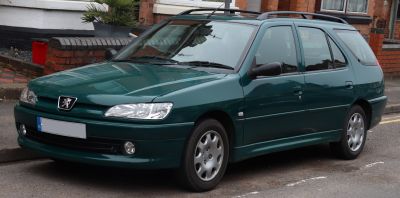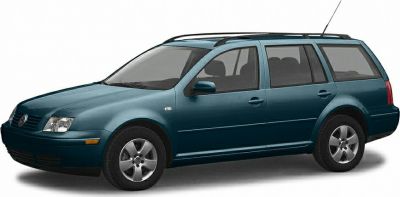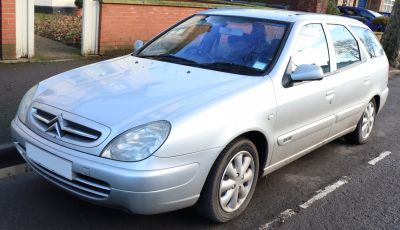 1994 Rover 400 Tourer (XW) Dimensions, Size & Specs
1994 Rover 400 Tourer (XW) Dimensions, Size & SpecsMeasurements of the 1994 Rover 400 Tourer, engineered for optimal performance and comfort
| Dimensions | |
|---|---|
| Length: | 4365 mm171.9 in14.3 ft |
| Width: | 1680 mm66.1 in5.5 ft |
| Height: | 1390 mm54.7 in4.6 ft |
| Trunk Capacity: | 430 liter15.2 cu ft |
| Trunk Capacity (Max): | 1410 liter49.8 cu ft |
| Weight Specifications | |
| Curb Weight: | 1125-1210 kg2480-2668 lbs |
| Maximal permitted Weight: | 1650 kg3638 lbs |
| Tire Specifications | |
| Tire Sizes: |
|
The Rover 400 Tourer (XW), produced from 1993 to 1998, is a versatile station wagon that blends practicality with compact dimensions ideal for family use and urban driving. Measuring 4365 mm (171.9 inches) in length, this model offers a balanced size that fits well into tight parking spaces while providing ample interior room. Its width of 1680 mm (66.1 inches) provides stability on the road, and the relatively low height of 1390 mm (54.7 inches) gives the vehicle a sleek profile. The curb weight ranges between 1125 and 1210 kg (2480-2667 lbs), with a maximum permissible weight of 1650 kg (3638 lbs), making it light and nimble for a station wagon of its class.
One of the key highlights of the Rover 400 Tourer is its impressive luggage capacity. With the rear seats in use, it offers 430 liters (15.2 cubic feet) of cargo space, which can be expanded dramatically to 1410 liters (49.8 cubic feet) by folding down the rear seats. This adaptability makes the 400 Tourer well-suited for carrying both everyday items and larger cargo when necessary. Tire options include sizes 175/65 R14 H and 185/55 R15 V, allowing for a balance of ride comfort and handling performance.
Overall, the Rover 400 Tourer (XW) stands out as a practical and efficient choice in the compact station wagon segment during the mid-1990s. It delivers a well-rounded package of manageable size, sufficient weight for stability, and versatile cargo space, making it a reliable option for buyers seeking a car capable of accommodating both passengers and goods without compromising on driving ease or fuel efficiency.
Discover the standout features that make the 1994 Rover 400 Tourer a leader in its class
Have a question? Please check our knowledgebase first.
The Rover 400 Tourer (XW) produced between 1993 and 1998 is a station wagon with a length of 4365 mm (approximately 171.9 inches), a width of 1680 mm (about 66.1 inches), and a height of 1390 mm (roughly 54.7 inches). These dimensions give it a balanced profile typical for compact estate cars of the mid-1990s, offering a spacious interior without excessive exterior bulk.
The curb weight of the Rover 400 Tourer (XW) ranges between 1125 kg and 1210 kg (approximately 2480 lbs to 2667 lbs). This relatively moderate weight helps the car remain agile and responsive while driving. It also contributes positively to fuel efficiency, as lighter vehicles generally consume less fuel. The curb weight reflects the weight of the vehicle with standard equipment and a full tank of fuel but without passengers or cargo.
The maximum weight, or gross vehicle weight, of the Rover 400 Tourer (XW) is 1650 kg (3638 lbs). This value indicates the heaviest the vehicle can be when fully loaded with passengers, luggage, and any additional cargo without compromising safety or performance. Adhering to this limit is crucial for maintaining vehicle handling, braking efficiency, and avoiding undue stress on mechanical components.
The Rover 400 Tourer offers a luggage capacity of 430 liters (about 15.2 cubic feet) with the rear seats in place, which is typical for station wagons aimed at practical family use. When the rear seats are folded down, the luggage capacity expands significantly to 1410 liters (approximately 49.8 cubic feet). This large cargo space allows for transporting bulky items, making the car versatile for various lifestyle needs, from daily errands to longer trips.
With a length of 4365 mm (171.9 inches), width of 1680 mm (66.1 inches), and height of 1390 mm (54.7 inches), the Rover 400 Tourer generally fits comfortably in a standard home garage. Typical single-car garages in many countries measure around 6 meters (196.9 inches) in length and 3 meters (118 inches) in width, providing ample space for this vehicle with room to open doors and move around. However, tighter garages may require more careful maneuvering because of the car's length and width.
The Rover 400 Tourer (XW), introduced in 1993, represents a more refined estate version compared to its predecessor. Dimensionally, it maintained compact estate proportions but benefited from improved design efficiency. While the previous Rover 400 models primarily targeted sedan and hatchback formats, the Tourer introduced more luggage space (430 liters vs. smaller early estate versions) and enhanced usability due to a longer body. Overall, the XW variant provided better space utilization and a slightly modernized look but retained a similar footprint to earlier Rover 400 estate conversions.
The Rover 400 Tourer sits comfortably within the compact station wagon category. With its 4365 mm (171.9 inches) length and 1125-1210 kg (2480-2667 lbs) curb weight, it compares well with rivals such as the Volkswagen Golf Variant and Ford Escort estate versions of the mid-1990s. The Rover was slightly lighter and narrower than some competitors, which helped with maneuverability in urban environments, while its cargo capacity of up to 1410 liters with seats folded was competitive. The car balanced practicality with modest exterior dimensions suited to everyday driving and parking.
The Rover 400 Tourer typically came with tire sizes of 175/65 R14 H or 185/55 R15 V. These tires contributed to a comfortable ride characteristic of estate cars, striking a balance between sporty handling and smooth cruising. The 14-inch tires offer a softer ride quality with larger sidewalls absorbing road imperfections, while the 15-inch option with lower profile tires emphasizes handling precision with a firmer feel. These tire options allowed owners to select priorities between comfort and responsiveness depending on road conditions and driving style.
The Rover 400 Tourer (XW) was designed as a practical station wagon combining compact dimensions with generous cargo space, making it ideal for families and daily tasks. Its build quality reflected Rover’s reputation in the 1990s for providing cars with refined interiors and balanced driving dynamics. The estate body style created versatile storage options and improved rear passenger comfort. Features such as easy-fold rear seats expanded luggage space up to 1410 liters and made it capable of handling larger cargo when needed. It also had respectable weight and tire options that balanced ride comfort with handling stability. Overall, the 400 Tourer (XW) was a versatile and reasonably sized estate that fit well into many lifestyles.
Owners of the Rover 400 Tourer should be aware of typical maintenance needs common to mid-1990s British cars. Regular servicing focusing on the drivetrain, suspension, and braking systems is important given the vehicle's curb weight and intended family use. Tire size choices may affect suspension tuning and wear patterns, so sticking to recommended tire specifications is advisable. Due to its production period, electronic components and parts might be less readily available today, so sourcing quality parts through specialist suppliers is recommended. Overall, routine upkeep ensures the 400 Tourer remains reliable and safe for practical daily use.
Discover similar sized cars.

| Production: | 1997-2002 |
|---|---|
| Model Year: | 1997 |
| Length: | 4338 mm170.8 in |
| Width: | 1680 mm66.1 in |
| Height: | 1415 mm55.7 in |

| Production: | 1998-2005 |
|---|---|
| Model Year: | 1999 |
| Length: | 4409 mm173.6 in |
| Width: | 1735 mm68.3 in |
| Height: | 1473-1485 mm58.0-58.5 in |

| Model Year: | 2017 |
|---|---|
| Length: | 4405 mm173.4 in |
| Width: | 1750 mm68.9 in |
| Height: | 1470-1485 mm57.9-58.5 in |

| Production: | 2003-2005 |
|---|---|
| Model Year: | 2003 |
| Length: | 4369 mm172.0 in |
| Width: | 2014 mm79.3 in |
| Height: | 1420 mm55.9 in |

| Production: | 2000-2003 |
|---|---|
| Model Year: | 2000 |
| Length: | 4369 mm172.0 in |
| Width: | 1975 mm77.8 in |
| Height: | 1420 mm55.9 in |
